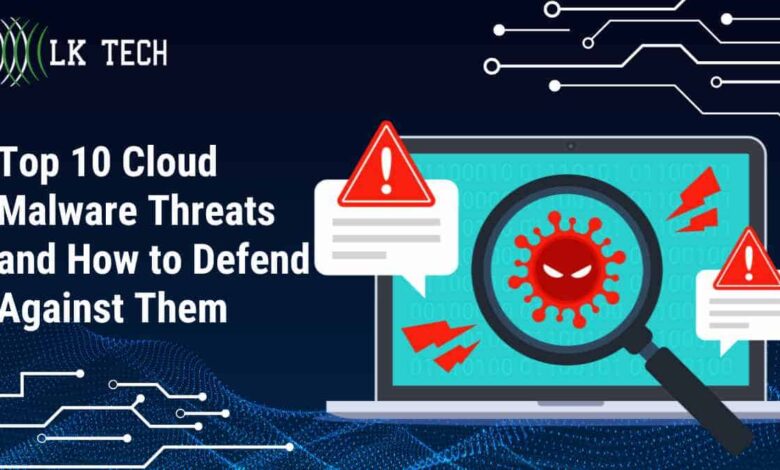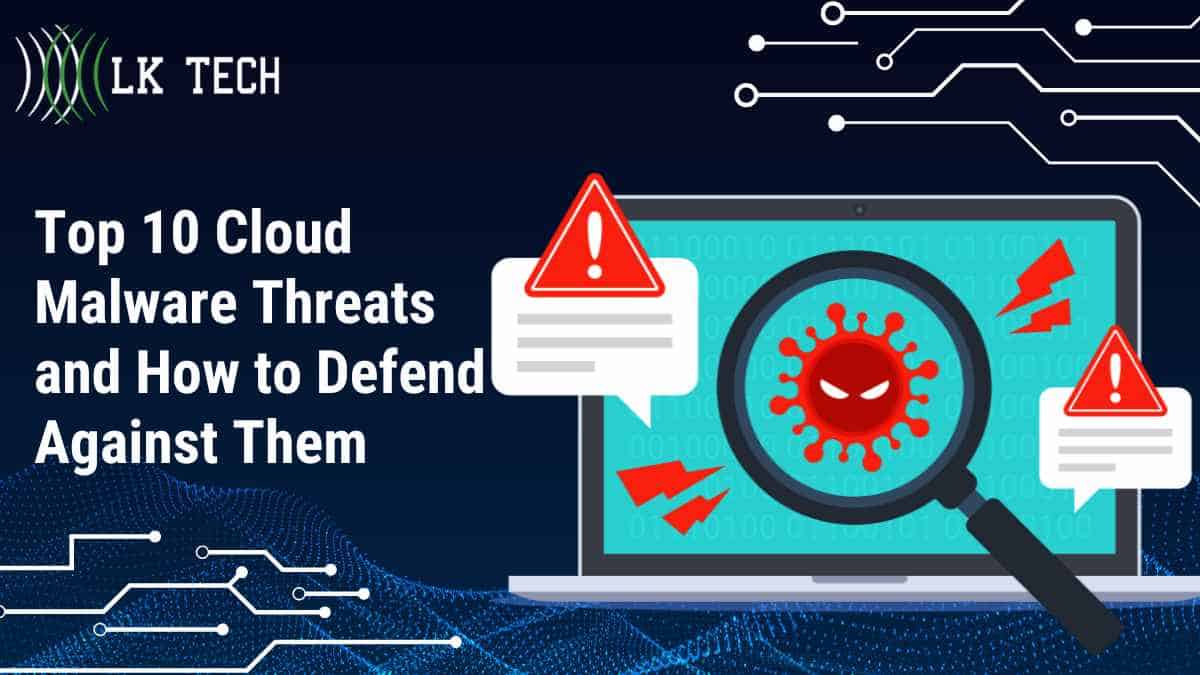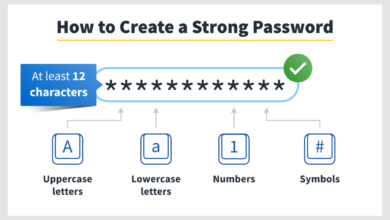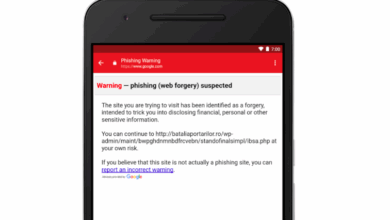
Cloud Services Now Spreading Malware
Cloud services now spreading malware? It’s a chilling reality, isn’t it? We rely on cloud services for everything these days – from storing photos to running businesses. But this convenient technology is increasingly becoming a battleground for cybercriminals. This isn’t just about some minor inconvenience; we’re talking about sophisticated attacks using ransomware, spyware, and trojans, all cleverly hidden within seemingly legitimate cloud platforms.
The methods are constantly evolving, making it crucial to understand the threats and how to protect ourselves.
This post dives deep into the alarming trend of malware distribution via cloud services. We’ll explore the techniques used by attackers, the types of malware involved, the vulnerabilities exploited, and, most importantly, the steps you can take to protect your data and your business. Get ready for a deep dive into the shadowy world of cloud-based malware.
The Rise of Malware Delivered via Cloud Services
The seemingly secure landscape of cloud computing has become a surprisingly fertile ground for malicious actors. The ease of access, scalability, and often lax security practices of some cloud services have made them attractive vectors for distributing malware, leading to a significant increase in sophisticated attacks. This shift represents a concerning evolution in the cyber threat landscape, demanding a more proactive and informed approach to cloud security.
Malware Distribution Trends Using Cloud Services
Recent trends show a clear increase in the use of cloud services for malware distribution. Attackers are leveraging the legitimate infrastructure of cloud platforms to bypass traditional security measures and reach a wider range of victims. This is driven by several factors, including the increasing reliance on cloud services by businesses and individuals, the complexity of cloud environments making detection difficult, and the availability of readily accessible and affordable cloud resources.
The anonymity afforded by some cloud services also contributes to the appeal for malicious actors. We are seeing a move away from simpler email attachments and towards more sophisticated techniques that leverage the inherent trust placed in cloud platforms.
Examples of Exploited Cloud Services
Several cloud services have been exploited for malware delivery. Examples include compromised cloud storage accounts (like Dropbox, Google Drive, or OneDrive) used to host malicious files, cloud-based file sharing services used to distribute infected documents, and even legitimate cloud applications modified to include malicious code. Attackers might compromise a developer’s account to inject malware into an application before it’s released, or they could exploit vulnerabilities in less secure cloud configurations.
The use of Infrastructure-as-a-Service (IaaS) platforms to host command-and-control (C&C) servers for botnets is another increasingly prevalent tactic.
It’s scary how easily cloud services are becoming vectors for malware these days; we’re seeing a huge increase in attacks. This is why solutions like those discussed in this article on bitglass and the rise of cloud security posture management are so crucial. Understanding and managing your cloud security posture is no longer optional – it’s essential to protect yourself from these increasingly sophisticated threats spreading through cloud services.
Techniques for Hiding Malware within Legitimate Cloud Services
Attackers employ various techniques to conceal malware within legitimate cloud services. Obfuscation is a common method, where the malicious code is disguised to evade detection by antivirus software. This might involve packing the malware within seemingly innocuous files, using encryption, or employing polymorphism (changing the code’s structure without changing its functionality). Another technique is to use legitimate cloud features for malicious purposes.
For example, attackers might leverage cloud storage’s versioning feature to hide malicious copies of files amongst legitimate versions, making detection more difficult. Social engineering, such as creating convincing phishing emails that link to malicious files stored in a cloud service, is also frequently used.
Comparison of Malware Delivery Methods Using Cloud Services, Cloud services now spreading malware
The following table compares different malware delivery methods using cloud services:
| Method | Description | Success Rate (estimated) | Mitigation Strategies |
|---|---|---|---|
| Compromised Cloud Storage | Malicious files hosted in legitimate cloud storage accounts. | High (60-70%)
|
Multi-factor authentication, strong passwords, regular security audits, robust antivirus software. |
| Malicious Cloud Applications | Legitimate applications modified to include malicious code. | Moderate (40-50%)
|
Thorough application vetting, regular software updates, sandboxing of untrusted applications. |
| Cloud-Based File Sharing | Infected files shared via cloud-based file sharing services. | High (70-80%)
|
User education, secure file sharing practices, email filtering and anti-phishing measures. |
| Cloud-Based C&C Servers | IaaS used to host command-and-control servers for botnets. | High (80-90%)
|
Intrusion detection systems, threat intelligence sharing, proactive monitoring of cloud infrastructure. |
Types of Malware Distributed Through Cloud Services: Cloud Services Now Spreading Malware
The seemingly secure environment of cloud services has unfortunately become a new battleground for cybercriminals. The ease of access and the vast scale of cloud platforms provide fertile ground for distributing various types of malware, impacting both individual users and large organizations. Understanding the specific types of malware used, their methods of delivery, and their consequences is crucial for effective cybersecurity strategies.
Ransomware Delivered via Cloud Services
Ransomware, designed to encrypt a victim’s data and demand a ransom for its release, finds a particularly effective distribution method through cloud services. Attackers can leverage compromised cloud storage accounts to distribute malicious attachments or links within seemingly legitimate files shared through cloud collaboration platforms. The scale of cloud storage allows for widespread distribution, reaching a large number of potential victims simultaneously.
The impact can be devastating, leading to data loss, financial losses from ransom payments, and significant disruption to business operations. For example, a recent attack saw attackers compromise a cloud storage account containing client data for a small accounting firm, encrypting all the files and demanding a hefty bitcoin ransom for their release.
Spyware Distributed Through Cloud Services
Spyware, designed to secretly monitor and collect user data, can be subtly embedded within seemingly legitimate cloud applications or delivered through malicious links shared via cloud platforms. Cloud-based spyware often uses sophisticated techniques to evade detection, leveraging cloud infrastructure for command-and-control (C&C) servers and data exfiltration. This can lead to the theft of sensitive personal information, financial data, intellectual property, and trade secrets.
The impact ranges from identity theft and financial fraud to reputational damage for organizations. Imagine a scenario where a malicious app, disguised as a productivity tool, is uploaded to an app store and secretly collects user location data, browsing history, and other private information.
Trojans Distributed Through Cloud Services
Trojans, disguised as legitimate software, often leverage cloud storage for distribution. Attackers might upload a Trojan disguised as a useful application or document to a cloud storage service, then spread links through phishing emails or social media. Once downloaded, the Trojan can perform various malicious actions, such as installing ransomware, stealing data, or creating backdoors for further attacks. The impact can be multifaceted, depending on the specific functionality of the Trojan.
A Trojan could give attackers remote control of a victim’s computer, enabling them to install additional malware, steal data, or even use the compromised system for further attacks against other targets.
Malware Types, Payloads, Targets, and Impacts
| Malware Type | Payload | Target Cloud Service | Impact |
|---|---|---|---|
| Ransomware | Encryption of files, ransom demand | Cloud storage (e.g., Dropbox, Google Drive), Collaboration platforms (e.g., Microsoft Teams, Slack) | Data loss, financial losses, business disruption |
| Spyware | Data theft (passwords, financial information, personal data) | Cloud applications, compromised websites linked from cloud services | Identity theft, financial fraud, reputational damage |
| Trojans | Various (data theft, ransomware installation, backdoor creation) | Cloud storage, file sharing services | Data breaches, system compromise, further attacks |
| Botnets (via malware) | Control of infected devices for DDoS attacks, spam distribution | Cloud infrastructure (servers, databases), IoT platforms | Service disruptions, data breaches, network overload |
Vulnerabilities Exploited in Cloud Services for Malware Delivery
Cloud services, while offering immense benefits, present a tempting target for attackers seeking to distribute malware. The inherent complexity and interconnected nature of these systems, coupled with the often-rapid pace of innovation, create vulnerabilities that malicious actors can exploit. Understanding these vulnerabilities is crucial for building robust security postures.The exploitation of cloud service vulnerabilities for malware delivery relies on various techniques, often involving a combination of social engineering, sophisticated code, and exploiting known weaknesses in the cloud infrastructure or applications running within it.
Attackers often target misconfigurations, outdated software, and insufficient access controls to gain a foothold and deploy their malicious payloads.
Insecure APIs and Interfaces
Attackers frequently target insecurely configured APIs and interfaces within cloud services. These APIs often manage critical functions, and a compromise can provide attackers with extensive access to data and resources. Exploitation often involves identifying vulnerabilities like SQL injection flaws, cross-site scripting (XSS) weaknesses, or insecure authentication mechanisms. Once a vulnerability is found, attackers can inject malicious code or gain unauthorized access, potentially leading to the deployment of malware that steals data, disrupts services, or establishes a persistent presence within the cloud environment.
A real-world example is the 2017 Equifax breach, where a vulnerability in the Apache Struts framework, used in their web application, allowed attackers to gain access and steal sensitive data.
Misconfigured Cloud Storage
Improperly configured cloud storage buckets or services represent another significant vulnerability. Publicly accessible storage buckets, for example, can expose sensitive data and executables, which attackers can download and utilize for malicious purposes. Malicious actors can also upload malware to these buckets, making it readily available for download by unsuspecting users or systems. This is often facilitated by weak or absent access control lists (ACLs) and a lack of proper encryption.
A high-profile example of this is the numerous incidents involving misconfigured Amazon S3 buckets exposing sensitive data, including personal information and intellectual property.
Compromised Credentials and Weak Passwords
Weak or stolen credentials are a common attack vector. Attackers use phishing campaigns, brute-force attacks, or exploit vulnerabilities in authentication systems to gain access to cloud accounts. Once inside, they can deploy malware, modify existing applications, or exfiltrate sensitive data. Multi-factor authentication (MFA) is a critical mitigation strategy here. For instance, the 2019 Capital One data breach involved the compromise of a cloud account due to weak security practices, leading to the exposure of millions of customer records.
Unpatched Software and Vulnerabilities
Out-of-date software and unpatched vulnerabilities are an open invitation for attackers. Cloud services often rely on a complex ecosystem of interconnected software components, and a single outdated component can compromise the entire system. Attackers leverage publicly available exploit kits to target known vulnerabilities in operating systems, databases, or applications, injecting malware to take control or gain access to sensitive data.
Regular patching and vulnerability scanning are essential to mitigate this risk. The WannaCry ransomware attack of 2017 is a prime example of the devastation that can result from widespread exploitation of unpatched vulnerabilities.
- Implement strong access controls and least privilege principles.
- Regularly patch and update all software and systems.
- Utilize multi-factor authentication (MFA) for all cloud accounts.
- Employ robust security information and event management (SIEM) systems for monitoring and threat detection.
- Conduct regular security assessments and penetration testing.
- Encrypt data both in transit and at rest.
- Implement strong input validation and sanitize user inputs to prevent injection attacks.
- Regularly review and update cloud security configurations.
- Utilize cloud security posture management (CSPM) tools.
- Employ a comprehensive security awareness training program for all personnel.
Impact and Consequences of Cloud-Delivered Malware

The rise of cloud computing has unfortunately brought with it a new vector for malware attacks. Cloud-delivered malware poses significant threats, impacting organizations and individuals in various ways, often with far-reaching and devastating consequences that extend beyond the immediate breach. The speed and scale at which these attacks can spread, coupled with the often-complex nature of cloud environments, makes them particularly dangerous.
Financial Impacts on Organizations
Cloud-based malware attacks can inflict substantial financial damage on organizations. Direct costs include the expenses associated with incident response, such as hiring cybersecurity experts, restoring data, and notifying affected individuals. Indirect costs can be even more significant, encompassing lost productivity, business disruption, legal fees, and reputational damage leading to decreased customer trust and loss of revenue. A large-scale attack could cripple a company’s operations for weeks or even months, resulting in millions, or even billions, of dollars in losses.
The cost of recovering from a ransomware attack targeting cloud-based data, for example, can be astronomical, considering the potential for data loss and the ransom demands themselves.
Reputational and Operational Impacts on Organizations
Beyond financial losses, cloud-delivered malware attacks severely damage an organization’s reputation. Data breaches, especially those involving sensitive customer information, can lead to significant public backlash, loss of customer trust, and negative media coverage. This reputational damage can be long-lasting and difficult to repair, impacting future business opportunities. Operationally, attacks can disrupt essential business processes, leading to delays in product delivery, compromised service availability, and decreased efficiency.
The disruption can ripple through the entire supply chain, affecting partners and clients alike. Recovery from such attacks often requires significant restructuring of security protocols and infrastructure, adding further to the financial burden.
Effects on Individuals and Data Privacy
When malware is distributed through cloud services, individuals are often the primary victims. The consequences can range from identity theft and financial fraud to the exposure of sensitive personal information such as medical records, financial details, and personal communications. The scale of the impact is amplified by the vast amounts of data stored in the cloud. A single breach in a cloud service provider could expose the data of millions of users.
The psychological impact on individuals who have experienced a data breach can also be significant, leading to anxiety, stress, and a loss of trust in digital services.
Comparison to Traditional Malware Distribution Methods
Cloud-delivered malware differs significantly from traditional methods. Traditional malware often relies on phishing emails, infected attachments, or malicious websites. Cloud-based attacks leverage the trust placed in cloud services and exploit vulnerabilities within the cloud infrastructure itself. This means attacks can spread much faster and more widely, affecting a far greater number of victims. The sophistication of cloud-based attacks is also often higher, making them more difficult to detect and mitigate.
Traditional methods might target individual machines, while cloud-based attacks can target entire systems and databases, resulting in far more extensive damage.
Scenario: A Supply Chain Attack Targeting Cloud-Based CRM
Imagine a scenario where a malicious actor compromises a third-party software provider that offers customer relationship management (CRM) software as a service (SaaS). This provider’s cloud infrastructure is targeted, and malware is introduced, giving the attacker access to the CRM data of numerous companies using the service. The malware remains undetected for several weeks, silently exfiltrating customer data, including names, addresses, email addresses, and purchasing history.
Once the breach is discovered, the affected companies face significant reputational damage, legal repercussions for violating data privacy regulations, and the costly process of notifying customers and mitigating the damage. The financial implications for both the software provider and its clients are substantial, including costs associated with data recovery, legal fees, potential fines, and the loss of customer trust.
Mitigation Strategies and Prevention Measures
Securing your cloud environment from malware attacks requires a multi-layered approach encompassing robust security policies, advanced technologies, and well-trained personnel. Ignoring any of these elements significantly increases your vulnerability. This section details best practices to minimize the risk of cloud-based malware infections.
It’s scary how easily cloud services are becoming vectors for malware these days. This makes secure, reliable application development even more critical, which is why I’ve been diving into the exciting world of domino app dev, the low-code and pro-code future , to see how it can help build more resilient systems. Ultimately, though, the fight against malware in the cloud is a constant battle, requiring constant vigilance and robust security practices.
A strong security posture begins with a well-defined and regularly updated security policy. This policy should cover all aspects of cloud security, from access control and data encryption to incident response and employee training. It’s crucial to regularly review and update this policy to adapt to evolving threats and vulnerabilities. Furthermore, consistent implementation and enforcement are paramount; a policy is only as good as its execution.
Robust Security Policies and Procedures for Cloud Services
Effective security policies for cloud services should define clear roles and responsibilities, access control mechanisms (like least privilege access), data encryption standards both in transit and at rest, and incident response plans. Regular security audits and penetration testing are essential to identify and address vulnerabilities before they can be exploited by malicious actors. For example, a policy might mandate multi-factor authentication (MFA) for all cloud accounts, regular password changes, and the immediate reporting of any suspicious activity.
These measures significantly reduce the likelihood of unauthorized access and malware infiltration.
Security Tools and Technologies for Cloud Malware Detection and Prevention
Several security tools and technologies can significantly enhance your cloud security posture. These include:
- Cloud Security Posture Management (CSPM) tools: These tools continuously monitor your cloud environment for misconfigurations and vulnerabilities that could be exploited by attackers. They provide alerts and recommendations for remediation, helping you maintain a secure baseline.
- Cloud Workload Protection Platforms (CWPPs): These platforms provide comprehensive security for virtual machines and containers running in the cloud, including intrusion detection, malware prevention, and vulnerability scanning.
- Security Information and Event Management (SIEM) systems: SIEM systems collect and analyze security logs from various sources, including cloud services, to detect suspicious activity and potential security breaches. They can correlate events to identify sophisticated attacks that might otherwise go unnoticed.
- Data Loss Prevention (DLP) tools: These tools help prevent sensitive data from leaving your cloud environment without authorization, reducing the risk of data breaches and malware exfiltration.
- Endpoint Detection and Response (EDR) solutions: While primarily focused on endpoints, extending EDR capabilities to cloud-based workloads provides enhanced visibility and threat detection within virtualized environments.
Employee Training Recommendations to Reduce Cloud-Based Malware Infections
Comprehensive employee training is crucial for mitigating the risk of cloud-based malware infections. Employees are often the weakest link in the security chain.
A well-structured training program should cover various aspects of cloud security awareness. This includes recognizing phishing attempts, understanding social engineering tactics, and following secure password practices. Regular refresher courses are vital to maintain awareness of evolving threats and best practices.
- Phishing and Social Engineering Awareness: Training should focus on identifying and reporting suspicious emails, links, and attachments. Real-world examples of phishing attacks should be used to illustrate the tactics employed by attackers.
- Secure Password Management: Employees should be trained on creating strong, unique passwords and using password managers to securely store them. The dangers of password reuse should be emphasized.
- Safe Cloud Usage Practices: Training should cover best practices for accessing cloud services, including using strong authentication methods and avoiding unauthorized applications or websites.
- Incident Reporting Procedures: Employees should be instructed on how to report any suspected security incidents or malware infections promptly and accurately.
- Regular Security Awareness Updates: Employees should receive regular updates on emerging threats and security best practices through newsletters, training modules, or other communication channels.
Final Conclusion

The rise of cloud-based malware is a serious threat, but it’s not insurmountable. By understanding the methods used by attackers, identifying vulnerabilities, and implementing robust security measures, we can significantly reduce our risk. Remember, proactive security is key. Staying informed, regularly updating your systems, and investing in strong security tools are crucial steps in protecting yourself in this ever-evolving digital landscape.
Don’t wait for an attack to happen – take control of your online security today.
FAQ Overview
What are some common ways malware is hidden in cloud services?
Attackers often use techniques like compromised accounts, exploiting vulnerabilities in third-party apps integrated with cloud services, or even creating fake cloud storage services that mimic legitimate ones.
How can I tell if my cloud service has been compromised?
Look for unusual activity like unauthorized file access, unexpected charges, or performance issues. Regularly review your cloud service’s security logs for suspicious events.
Is it safe to use cloud services at all?
Yes, but it’s crucial to use reputable providers, enable multi-factor authentication, keep software updated, and practice good security hygiene.
What’s the difference between cloud-delivered malware and traditional malware?
Cloud-delivered malware leverages the cloud’s infrastructure for distribution and persistence, making it harder to track and remove. Traditional malware relies on direct downloads or physical media.




